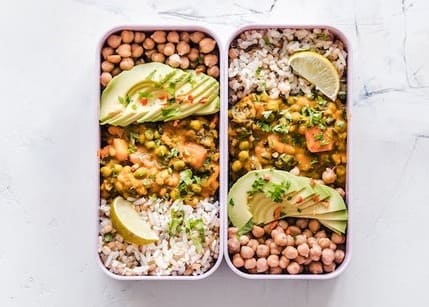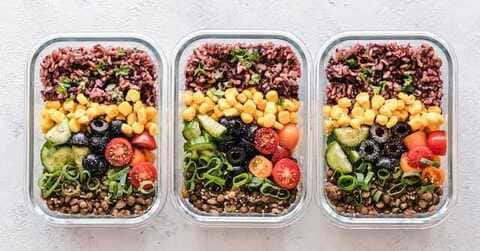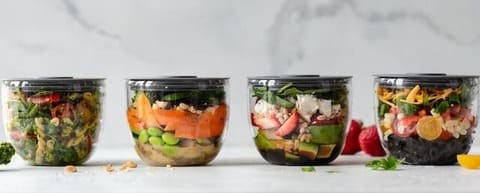Tips & Tricks for a Healthy and Nutritious Lunchbox
Navigating the culinary challenges of each meal presents unique hurdles. Breakfast rushes often leave little time for a protein-packed meal, while unplanned dinners can turn into a puzzle of conflicting tastes. Lunch, with the added complexity of school-wide food restrictions or crafting a nutritious lunchbox, stands out as particularly tricky.
This comprehensive guide explores proven strategies for creating balanced, appealing lunches that fuel your day or your child’s learning. We’ll cover nutritional considerations, time-saving preparation techniques, eco-friendly equipment options, and creative approaches to make lunch an anticipated highlight rather than an afterthought.

Recognizing lunch’s vital role in replenishing energy and providing essential nutrients, it’s crucial to avoid settling for greasy food court meals or discovering uneaten items in a child’s lunchbox.
Whether you’re packing a healthy lunch for yourself or a child, consider these dietary and equipment essentials to make lunchtime an exciting and nourishing experience.
Why Lunch Matters: The Midday Nutrition Gap
Lunch plays a crucial role in our daily nutritional intake and energy management. After the morning’s activities have depleted our breakfast fuel, lunch replenishes essential nutrients that power us through afternoon responsibilities. For children, a nutritious midday meal directly impacts learning capacity, mood regulation, and physical development.
Despite its importance, lunch is often the most compromised meal:
- For adults: Workplace pressures lead to desk lunches, fast food options, or sometimes skipping the meal entirely
- For children: School cafeteria offerings may lack nutritional value, while packed lunches often return home partially eaten
- For everyone: The mid-day rush leaves little time for thoughtful meal consumption, leading to mindless eating or unhealthy choices
Research consistently shows that a balanced lunch contributes to:
- Sustained energy levels throughout the afternoon
- Improved concentration and productivity
- Better mood regulation and stress management
- Consistent nutrient intake for overall health
- Established healthy eating patterns that influence other meals
Rather than surrendering to convenient but nutritionally void options like food court meals, vending machine snacks, or ultra-processed packaged foods, implementing a strategic approach to lunch planning can transform this challenging meal into a nutritional cornerstone of your day.
Tips for Crafting a Healthy Lunchbox:
1. Diverse Nutrients:
- Protein: Nuts, seeds, eggs, fish, meat, beans.
- Fats: Coconut oil, ghee, avocado, salmon, dark chocolate.
- Fiber + Complex Carbs: Gluten-free whole grains, fruits, vegetables, nuts, seeds.
- Vitamins and Minerals: Load up on various fruits and veggies.
Read about Eat the Rainbow: Why Children Need Colorful Fruits & Veggies

2. Include a Green Element:
Incorporate nutrient-rich green foods like dark leafy greens, celery, cucumber, and more. Make it interactive for kids by turning it into a guessing game.
3. Utilize Leftovers:
Save time and reduce waste by repurposing leftovers or preparing large batches for multiple meals.
- Cook once, eat twice: When preparing dinner, make additional portions specifically for next-day lunches
- Repurpose creatively: Transform dinner elements into new lunch combinations (roasted chicken becomes chicken salad; taco fillings become burrito bowls)
- Component cooking: Prepare individual elements (proteins, grains, roasted vegetables) that can be mixed and matched throughout the week
- Storage solutions: Invest in divided containers that keep components separate until eating time
This approach minimizes morning preparation while providing freshly made food without relying on highly processed convenience items.
4. Prep in Advance:
Ease the morning rush by preparing salads, snacks, and condiments in advance. Batch-cook items like grains, beans, and legumes for versatile lunch bowls.
5. Incorporate Snacks:
Pack smaller, nutritious snacks for those who prefer lighter meals. Options include baked goods, crudites with dips, fresh fruit, trail mix, and more.

6. Minimize Processed Foods:
Opt for homemade over processed, reducing sodium and preservatives. Choose bulk packaging to minimize environmental impact.
7. Embrace Eco-Friendly Equipment:
Ditch disposable items for reusable alternatives like stainless steel containers, beeswax wraps, and eco-friendly snack bags. Invest in a thermos or mini-slow cooker for hot lunches.
8. Involve Kids:
Empower children by involving them in lunch choices, fostering a sense of responsibility. Encourage participation in meal preparation to instill valuable culinary skills.
Making It Happen: Implementation Strategies
Knowledge about nutrition and lunch packing techniques only creates change when implemented consistently:
1. Start with a Realistic Schedule
Begin with an honest assessment of your morning time constraints:
- Morning preparation capacity: Determine how much time is actually available for lunch assembly
- Evening preparation potential: Identify possible preparation times the night before
- Weekend preparation blocks: Schedule specific times for batch preparation
Create a system that works within your actual schedule rather than an idealized version of your routine.
2. Build a Reliable Recipe Collection
Develop a personalized resource of lunch options that meet your specific needs:
- Quick-assembly options: Meals requiring minimal morning preparation
- Batch-cooking recipes: Foods that prepare efficiently in larger quantities
- Universal pleasers: Recipes enjoyed by everyone who needs packed lunches
- Seasonal rotations: Options that use in-season produce for better flavor and value
Having 10-15 reliable options prevents decision fatigue while maintaining variety.
3. Establish a Preparation Routine
Consistency comes from established patterns:
- Designated preparation areas: Create specific spaces for lunch assembly
- Container systems: Establish organized storage for lunch-packing equipment
- Shopping routines: Include lunch-specific items in regular grocery planning
- Clean-out schedules: Build habits for emptying and cleaning lunch containers daily
These routines gradually reduce the mental load of daily lunch decisions.
4. Embrace Imperfection and Flexibility
Sustainable lunch packing embraces reality rather than perfection:
- Backup options: Identify acceptable convenience alternatives for unusually busy days
- 80/20 approach: Focus on consistency rather than perfection
- Seasonal adjustments: Modify expectations during particularly busy periods
- Reassessment: Regularly evaluate what’s working and what needs adjustment
A flexible approach maintains the practice over time rather than abandoning it when perfection isn’t possible.

Conclusion: The Cumulative Impact of Lunch Choices
While a single day’s lunch choice may seem inconsequential, the cumulative effect of daily lunch decisions significantly impacts health, environmental footprint, and financial well-being. By incorporating these essentials into your lunch-packing routine, you can transform lunchtime into a delightful and nutritious experience. What lunch-packing strategies have worked in your household? What additional tips do you have for packing a healthy lunchbox? Share your tips and challenges with us.





